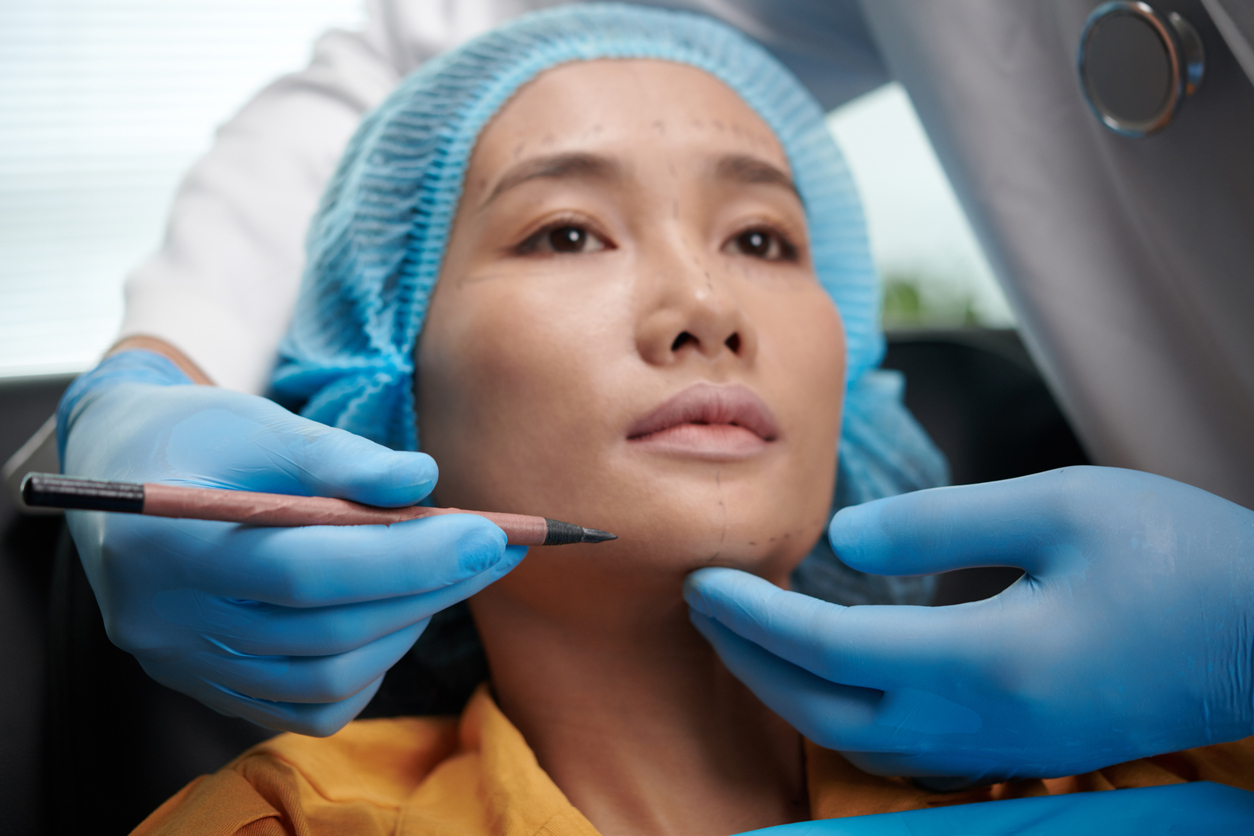For individuals who are seeking to enhance their facial features and achieve a more balanced facial appearance, facial implants are a powerful solution. Whether it is structural imbalances that you are seeking to correct or you are just trying to rejuvenate your aging features and achieve a more youthful look, facial implants can be your greatest ally. A board-certified surgeon in Beverly Hills can help you choose among the different types of facial implants and understand how implants can prove to be the best solution for your concerns. Your surgeon will judge which type and size of implant is best for you depending on your goals and the features you want to correct or enhance. But what are facial implants, exactly?
What Are Facial Implants?
Facial implants are sculpted pieces of silicon and other substances that imitate the texture and density of one’s natural bone and tissue. They are surgically placed under the skin in different areas of the face, such as the cheeks, jaw, and chin, to enhance the contours and general appearance of the face.
Patients who opt for facial implants aim to achieve facial symmetry, correct congenital or traumatic deformities, and correct volume loss due to aging.
Types of Facial Implants
Chin Implants
Chin implants, sometimes called genioplasty, change the appearance of your chin and provide a more defined jawline. They are beneficial to patients who have a recessed chin. Sometimes, the size and projection of a chin are not in proportion to the forehead and midface. Chin implants can rectify this problem.
Cheek Implants
Cheek implants may be the solution you are looking for if you want to add volume to your cheeks. This procedure involves placing implants over the cheekbones. It helps patients who want a fuller and younger appearance, and it is advantageous for those who have sunken cheeks due to aging.
Jaw Implants
Jaw implants are usually used to enhance the width and definition of the jawline, allowing patients to have a more defined, masculine look. They are otherwise known as mandibular implants and provide a more balanced facial appearance.
Nasal Implants
Nasal implants can enhance the shape and contour of the nose when used in rhinoplasty procedures. They are beneficial for patients with nasal deformities, who need nasal bridge augmentation, or who want to refine the tip of their nose.
The Procedure
The process of getting facial implants involves different steps or stages.
1. Consultation
Your journey will start with a consultation with a qualified surgeon. During this visit, the plastic surgeon will evaluate your facial structure. It is also during this visit that you will express your problem areas and goals. This will help your surgeon determine the best type of implant for you, inform you of what is achievable, and keep your expectations realistic.
Make sure that you are in good health and inform your surgeon about any health issue you have or had. Remember to mention if you have undergone any reconstructive surgery on your face.
2. Planning
Your plastic surgeon will develop a customized surgical plan based on what you discussed during your consultation. This includes determining the implant’s size and shape and identifying the incision sites.
3. Surgery
Surgeons often perform the procedure using general anesthesia or sometimes local anesthesia with sedation. The surgeon chooses inconspicuous locations where he can make small incisions and carefully places the implants in a pocket created beneath the skin and muscle to avoid or lessen the appearance of visible scars.
4. Recovery
Like any other surgical procedure, post-operative care is crucial to the recovery process. Swelling, bruising, and discomfort are normal experiences of facial implant patients. However, cold compresses and prescribed medications can help patients manage these side effects.
Remember to follow your surgeon’s advice regarding rest in the comfort of your home. You should also avoid unnecessary activities where you may bump your face into something or someone.
Although patients can normally return to work after a week, if your circumstances permit, you might want to take two weeks off because the redness, swelling, and bruising only subside within 1-2 weeks after surgery.
Patients are reminded to take special care and avoid contact sports or other activities where the implants are likely to get bumped out of position. Remember that it will take months for your tissues and the implants to fully integrate, so you need to be extra careful.
Take the First Step Toward an Enhanced You
Remember that facial implants will not entirely change the way your face looks. Still, they can help you enhance your features, boost your self-confidence, and improve your relationship with yourself and with those around you. However, it is important to remember that the success of the surgery depends largely on your health and the skills of your surgeon. So look for a licensed and skilled surgeon you can trust and be open with. Schedule a consultation with Dr. Karan Dhir to see how he can help you achieve your goals.

